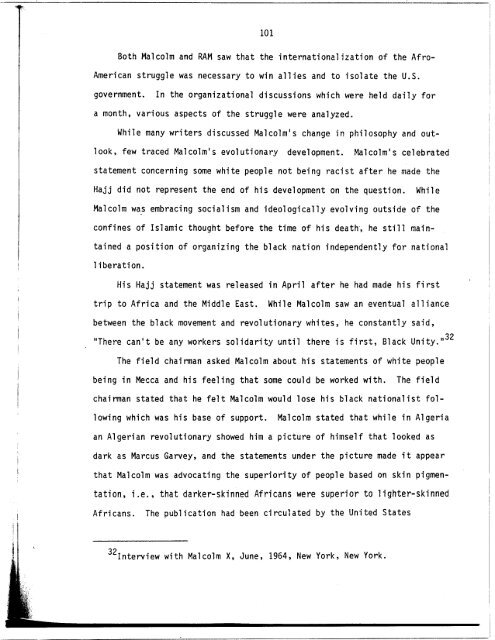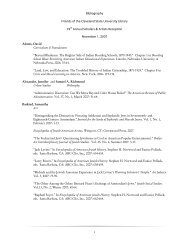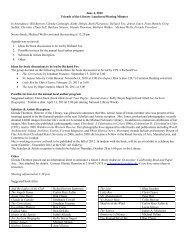revolutionary action movement (ram) - Michael Schwartz Library
revolutionary action movement (ram) - Michael Schwartz Library
revolutionary action movement (ram) - Michael Schwartz Library
Create successful ePaper yourself
Turn your PDF publications into a flip-book with our unique Google optimized e-Paper software.
Both Malcolm and RAM saw that the<br />
American struggle was necessary to win allies and to isolate the U .S .<br />
government . In the organizational discussions which were held daily for<br />
a month, various aspects of the struggle were analyzed .<br />
While many writers discussed Malcolm's change in philosophy and<br />
internationalization of the Afro-<br />
outlook,<br />
few traced Malcolm's evolutionary development . Malcolm's celebrated<br />
statement concerning some white people not being racist after he made the<br />
Hajj did not represent the end of his development on the question . While<br />
Malcolm was embracing socialism and<br />
ideologically evolving outside of the<br />
confines of Islamic thought before the time of his death, he still maintained<br />
a<br />
position of organizing the black nation independently for national<br />
liberation .<br />
His Hajj statement was released in April after he had made his first<br />
trip to Africa and the Middle East . While Malcolm saw an eventual alliance<br />
between the black <strong>movement</strong> and<br />
<strong>revolutionary</strong> whites, he constantly said,<br />
"There can't be any workers solidarity until there is first, Black Unity ." 32<br />
The field chairman asked Malcolm about his<br />
statements of white people<br />
being in Mecca and his feeling that some could be worked with . The field<br />
chairman stated that he<br />
felt Malcolm would lose his black nationalist following<br />
which was his base of support .<br />
an Algerian <strong>revolutionary</strong> showed him a<br />
Malcolm stated that while in Algeria<br />
picture of himself that looked as<br />
dark as Marcus Garvey, and the statements under the picture made it appear<br />
that Malcolm was advocating the<br />
superiority of people based on skin pigmentation,<br />
i .e ., that darker-skinned Africans were superior to lighter-skinned<br />
Africans . The publication had been circulated by the United States<br />
32 Interview with Malcolm X, June, 1964, New York, New York .








